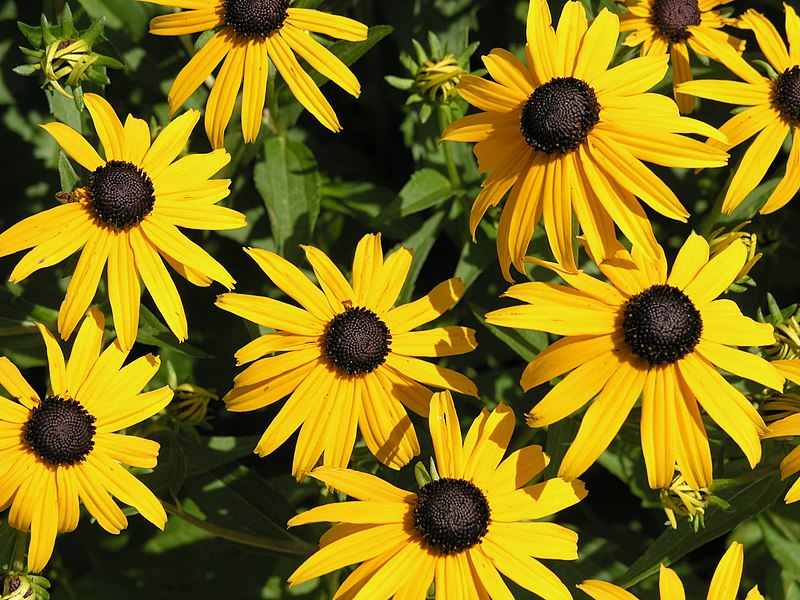 |
| Rudbeckia fulgida var. sullivantii 'Goldsturm' |
Below is an excerpt from the Perennial Plant Association's website:
Rudbeckia fulgida var. sullivantii 'Goldsturm' has been selected by the Perennial Plant Association as the 1999 Perennial Plant of the Year. Acclaimed internationally as one of the most popular perennials for the past fifty years, its bright golden-yellow flowers shine in gardens worldwide. In 1937 Heinrich Hagemann observed a glorious stand of Rudbeckia fulgida var. sullivantii at Gebrueder Schuetz's nursery in the Czech Republic. Recognizing the superiority over other commonly-grown Rudbeckia species, Hagemann convinced his employer Karl Foerster of Potsdam, Germany to propagate his discovery. World War II interfered with the planned debut of the plant and it was not until 1949 that the triumphant success of Rudbeckia fulgida var.sullivantii renamed 'Goldsturm' began. 'Goldsturm' translates to English as "gold storm." Heinrich Hagemann, although retired, maintains an active interest in his company, the world-renowned Hagemann Staudenkulturen. A member of the Asteraceae (Compositae) family, orange coneflower or black-eyed Susan has a native range from New Jersey west to Illinois. 'Goldsturm' orange coneflower is significant in its compact habit and 1-2-inch golden-yellow petals which encircle a nearly black cone of disk flowers. The leaves are coarse, dark green lanceolate to ovate, 3-6 inches long; stem leaves are smaller, almost bract-like. The "gold storm" blankets the tops of 18-30-inch tall plants from mid-July to October. Plant width is 24 inches.